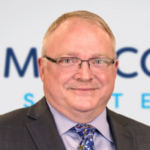 By Dr. Jay Anders, Chief Medical Officer, Medicomp Systems
By Dr. Jay Anders, Chief Medical Officer, Medicomp Systems
Twitter: @MedicompSys
Twitter: @medicompdoc
Host of Tell Me Where IT Hurts – #TellMeWhereITHurts
As a digital services expert at the White House’s United States Digital Service for the past three years, Amy Gleason has worked to address the many interoperability and infrastructure challenges impacting healthcare. When COVID shut down the country in March of 2020, Gleason was quickly detailed to Dr. Deborah Birx’s White House Coronavirus Task Force – and then things really got hopping.
In this Tell Me Where IT Hurts episode, I sat down with Amy Gleason, a digital services expert and project lead at the US Digital Service. Gleason shares details about her health IT career, including her current role as part of a White House team tasked with developing a platform to collect and share COVID data – which required overcoming numerous interoperability issues. But first, I relay a personal experience I had with interoperability early in my career.
Episode NOW on Demand
Kazakhstan and interoperability, circa 1998
I share a story about working on a medical mission in Kazakhstan in 1998 where I experienced “completely interoperable” healthcare. Each patient I saw carried several 3X5 index cards that included all the basic details about the patient’s medical history. The records were totally portable – and patients carried the cards with them every time they received medical care. Unfortunately, back at my very large multi-specialty group in Champaign, Illinois, patients didn’t have the same access to their records. Despite the widespread use of EHRs across the region, patient records were usually faxed or forwarded on paper.
The road from clinician to the White House
Gleason’s healthcare and health IT journey started in the emergency department as a nurse. It was in the ER that she first used an EMR and realized the power of healthcare technology. Later she moved to an EMR startup vendor, working in training, implementation, support, sales and account management. Through the years Gleason worked for several health IT companies in various roles, including product design.
Gleason learned more about the challenges of being a patient and caregiver – and how difficult it could be to navigate the healthcare system – when her daughter was diagnosed with a rare, life-threatening auto-immune disease at age 11. From there she co-founded a company to help patients get their medical records and control who had access to them, and to help patients navigate the system. When the company was sold, Gleason applied for a role with the US Digital Service and joined in October of 2018.
Technology meets policy meets COVID
Originally Gleason joined the US Digital Service for a tour of civic duty to work on a variety of technology projects designed to empower civil servants and bring new approaches and technology to the government. On March 12, 2020, however, she was detailed to Dr. Birx’s White House Task Force team.
Most of the projects she has worked on have been related to data and technology. She notes that at the beginning of the pandemic, everyone was working to understand the situation, gather data from multiple sources, and get a handle on “things as simple as just understanding how many new cases there were every day in each county and how many people died in each county across the country.” Initially multiple federal agencies, along with states and counties were keeping their own counts, leading to data errors and duplications.
Dr. Birx brought together a team of subject matter experts from across the federal government to create a platform that compiled all the COVID data from multiple sources in different formats. This resulted in a set of analytics products that drove the federal response and allowed the government to proactively address potentially troublesome supply or staffing issues, including shortages, at the local level.
As Gleason worked on other projects, she became highly aware of the challenges that local hospitals, labs, and provider offices were facing due to a massive increase in data collection and reporting requirements for public health, and a lack of interoperability between systems. One of the initiatives she is now involved in focuses on improving processes for public reporting to make it easier, more complete, and accurate. She reports that one of the big successes so far has been figuring out how to have a common federal data source of truth that is available for federal, state, and local use.
Waving a magic wand
I close the discussion by asking Gleason what she would change in healthcare IT if she could wave a magic wand.
To find out Gleason’s answer listen to the podcast. (Hint: Like myself, Gleason is a big proponent of giving patients access to their data.)
This article was originally published on the Medicomp blog and is republished here with permission.
About the Show
On Tell Me Where IT Hurts, join host Dr. Jay Anders as he sits down with experts from across healthcare and technology to discuss ways to improve EHR usability for end users. Dr. Anders and his guests explore opportunities to enhance clinical systems to make them work better for clinicians, reduce burnout, maximize revenue potential, and drive better patient care outcomes. Join the conversation on Twitter at #TellMeWhereITHurts.
